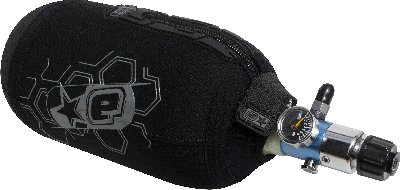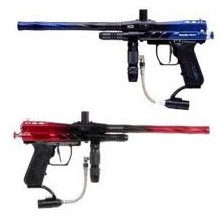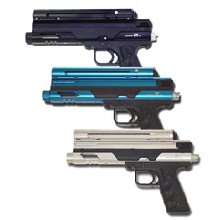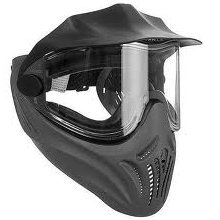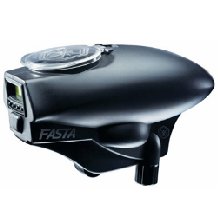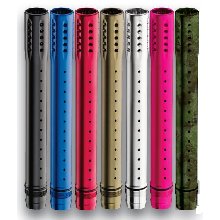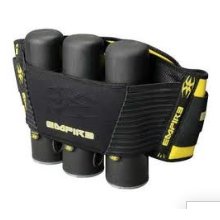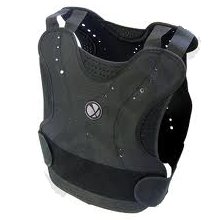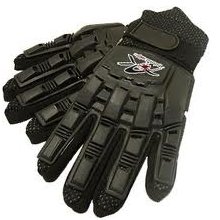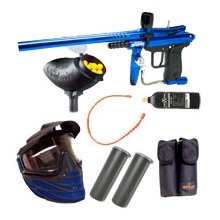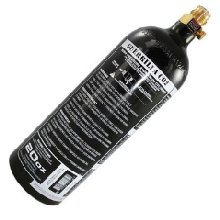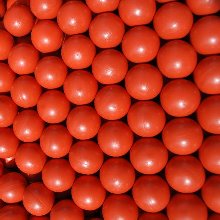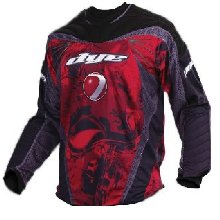Paintball Air Tanks - CO2 vs. Compressed Air
Your air tank is perhaps the most important part of your paintball marker. Having the right tank on your gun can help the weapon shoot better, further, faster, and with much less jammed or broken paintballs.
While playing, your air represents your life. Run out of compressed air, and you can no longer fire your gun. You'll want to have a paintball tank with adequate capacity, as well as one that fits your weapon without throwing off the balance.
Air tanks are made specifically to hold one type of air - they're not interchangable. So either you own a CO2 tank that can only hold carbon dixoide, or you get a compressed air tank (also called a Nitrogen, N2, Nitro, or High Pressure Air). Most guns however, can take either one.
So what's the difference? Which type of air tank is best for paintball, and why are there two?
To answer that question, let's break down each air type. Both CO2 and N2 systems have advantages and disadvantages, and as so often happens things end up coming down to a matter of personal preference.
CO2 - Carbon Dixoide Tanks
When the sport of paintball began, everything was CO2. For a long time CO2 was the standard propellent, especially in the small metal cartridge cylinders used in every oldschool paintball gun.
As those cylinders were phased out, larger carbon dioxide tanks were brought in. These had the advantage of being refillable, and because they held more air they offered way more shots before having to reload/refill.
The advantages of CO2 are twofold. First, CO2 is cheap and inexpensive. It's easy for any paintball field to set up a CO2 refill station, and this is also where fields make some money (usually charging $2 or $3 for a refill). Some fields also offer a wristband that give you unlimited refills for a one-time price.
The other advantage of the CO2 tank is that it's fairly light. The tanks can be smaller than compressed air or N2 tanks and still hold the same number of shots. Weight is certainly a factor to consider when setting up your paintball gun, so if you play speedball and have the need to travel fast? A smaller, lighter CO2 tank might be the way to go.
Liquid CO2 does have some flaws however, and the biggest one is temperature. Firing your gun very rapidly will cause the CO2 tank to chill, even to the point where frost can form. Keep firing, and you'll see white puffs of vapor coming out of your barrel, or even flakes of snow (technically dry ice).
Playing in warm weather will cause all kinds of condensation problems if you're firing many paintballs in rapid succession. On the outside of the gun this is no big deal, but inside the gun condensation can cause big issues. Wet paintballs won't fly straight, and moisture in the gun can cause balls to chop or break.
Cold weather presents problems for CO2 as well. If the pressure in the air tank gets too low, it won't fire properly. Over time, liquid CO2 can also damage the O-rings inside the Venturi bolt or firing mechanism of your gun, causing you to replace them twice as fast as normal.
Compressed Air or N2 Tanks
HPA (high pressure air) evolved as a necessity: as guns could fire faster and faster, the need for a more stable compression system became necessary. Nitrogen gas, or N2, has the advantage of being more consistent, no matter what the temperature outside or how quickly you fire your paintball marker.
The main drawback to N2 is that it often requires a bigger, heavier tank. Fiber-wrapped tanks must be larger in order to hold approximately the same number of shots as a CO2 style of tank, causing a more clunky and bulky feel to the paintball gun.
These bigger tanks also led to the introduction of 'remote systems'. In this case the the tank get mounted externally, usually on the player's back in a mesh paintball harness. This frees up the player's gun hand and alleviates weight. Check here for more about paintball harnesses.
HPA tanks are much more expensive to buy when compared to CO2 tanks. Compressed air itself is also more expensive, and some fields will charge more for this type of refill as compared to CO2.
Finally fiber-wrapped tanks are also more susceptible to damage. Players usually cover these tanks with neoprene zip-covers, and these come in all different colors and styles.
Which Tank is Right For Your Paintball Gun?
The first thing to do before choosing a tank is to check the owner's manual of your paintball marker. In most cases your gun can accept either form of propellent, but some of today's later guns are only compatible with an HPA or compressed air system.
Your next move? Decide where you'll be playing. If outdoors, consider the climate in which you live. Overall, compressed air seems to be the more popular choice. As someone who lives in New York, I've tried both systems and wouldn't go back to using CO2. Not that CO2 was bad, but the compressed air tanks I've owned always gave more consistent results.
Below you'll find a list of the more common CO2 and compressed air tanks out there, as well as some tank covers and remote systems you can use to mount your tank externally:
In the end, you may want to get more than one tank for your paintball gun, depending upon which types of games you play. On an outdoor, long type of field? A larger, higher-capicity tank might suit you better. But on smaller, indoor fields, where the games are faster and the refill station is right there? A smaller, lighter aluminum paintball tank might be better for you.
Other Gear and Paintball Equipment
From guns to shingguards, there's lots to know about playing paintball. Check out the complete list of available gear below, along with a "how to" guide for the beginning paintballer in each category:
